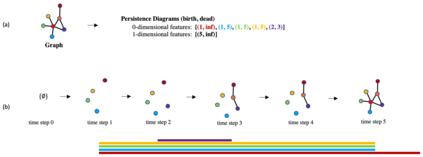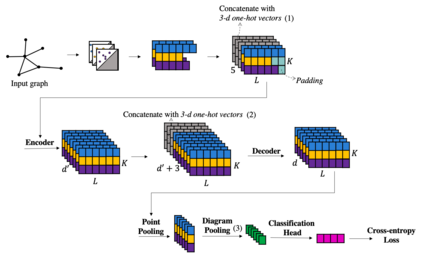Persistence diagrams (PDs), often characterized as sets of death and birth of homology class, have been known for providing a topological representation of a graph structure, which is often useful in machine learning tasks. Prior works rely on a single graph signature to construct PDs. In this paper, we explore the use of a family of multi-scale graph signatures to enhance the robustness of topological features. We propose a deep learning architecture to handle this set input. Experiments on benchmark graph classification datasets demonstrate that our proposed architecture outperforms other persistent homology-based methods and achieves competitive performance compared to state-of-the-art methods using graph neural networks. In addition, our approach can be easily applied to large size of input graphs as it does not suffer from limited scalability which can be an issue for graph kernel methods.
翻译:常年性图表(PDs)通常被描述为死亡和同族阶级诞生的几组,以提供图表结构的表层表示而著称,这种图表结构往往用于机器学习任务。先前的工程依赖于一个单一的图形签名来构建 PDs。在本文中,我们探索使用多尺度图形签名的组合来增强地形特征的稳健性。我们提出了处理这一集输入的深层次学习结构。基准图表分类数据集实验表明,我们拟议的结构优于其他以同族主义为基础的持久方法,并实现了与使用图形神经网络的最先进方法相比的竞争性性能。此外,我们的方法可以很容易地应用于大量输入的图形,因为它不会受到有限的可缩放性的影响,而这种可成为图形内核方法的一个问题。








